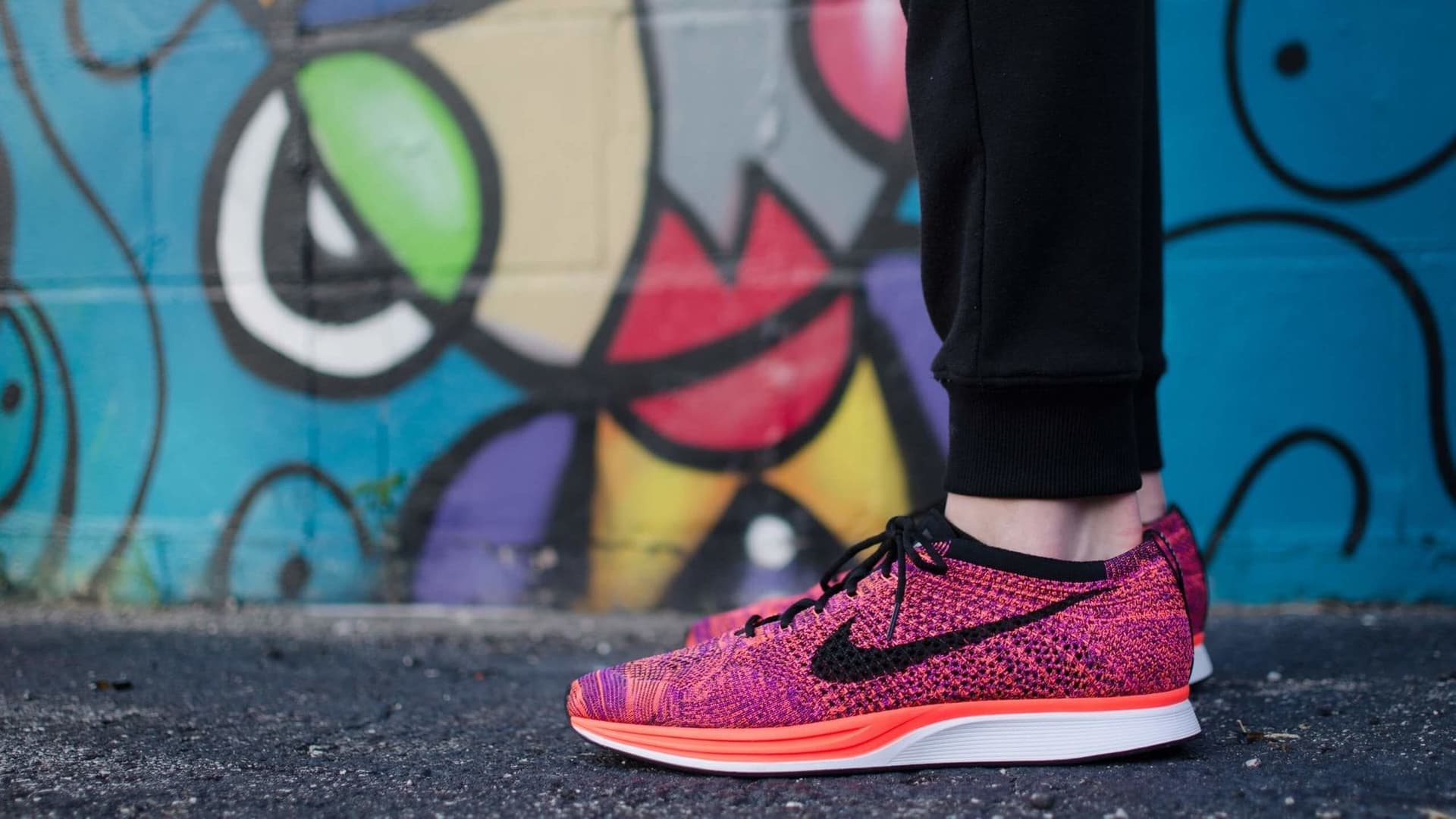When you want to get your message in front of the right people on social media, where do you turn?
More and more, brands and businesses are turning to social ads and custom audiences. You can do a lot of awesome, targeted messaging by focusing on the right audiences with your ads — whether you’re talking to a group of customers, a bunch of website visitors, or a list of subscribers
In this post, we’ll talk you through ways to build custom audiences and lookalike audiences on all the major social media platforms, plus share a couple ideas of how you can put these audiences to the best use.
Best wishes for some well-targeted, highly successful ads!
An introduction to custom audiences
There’s a huge amount to cover with social media ads.
Since this blog post focuses specifically on audiences, let’s start there. In general, an audience is going to be the bucket of people who will potentially see your ad. This group can be customized based on a variety of factors, which we’ll get to in a minute.
A custom audience is a step beyond the basic demographic and psychographic audience filters. A custom audience can be based on an outside source like a set of emails or website visitors or on the social media behavior of users.
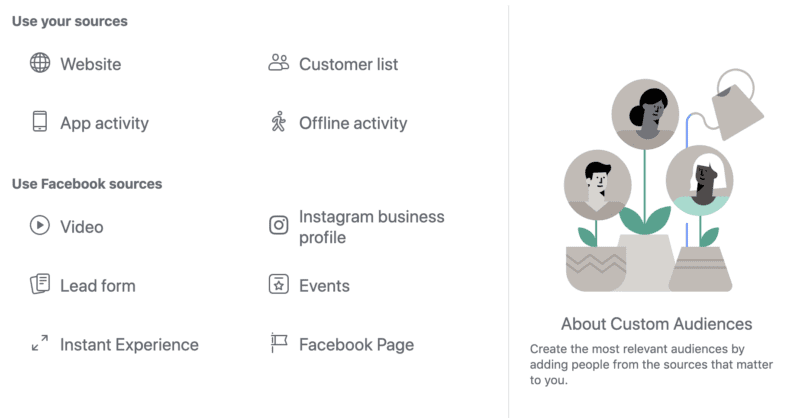
And then you have lookalike audiences, which take one of your custom audience and expand it to a larger group based on the qualities that the custom audience has in common. For instance, if all the people in your custom audience are interested in augmented reality, use social on a tablet, and have master’s degrees, then a lookalike audience will include people who share these attributes, too.
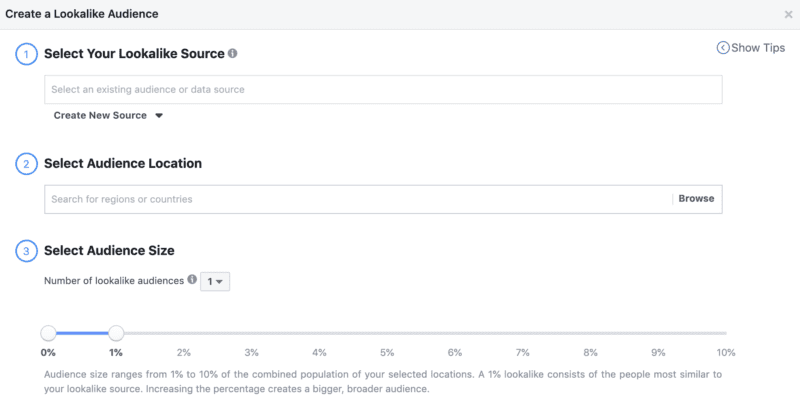
As you can tell, there are many ways to slice and dice this information to build some really unique audiences.
So let’s get dive into some of the details, starting with the biggest and most robust social advertising networks … Facebook and Instagram.
How to Create Custom Audiences for Facebook and Instagram Ads
Advertising for both Facebook and Instagram is combined into the Facebook Ads Manager. You can run all your ads from here as well as create and manage all your audiences.
Within Facebook, there are a handful of custom audiences that you can build. This list includes:
1. A customer list — also known as a standard custom audiences.
This audience is based on a list of emails, phone numbers, or Facebook user IDs that Facebook can then take and match to its list of users. Typically you’ll find that Facebook can match between 60 and 70 percent of the contacts on your customer list.
2. You can create a website custom audience.
With this audience, instead of uploading a list of customer emails or phone numbers, you build the audience based on traffic to your website. Using Facebook Pixel tracking, you can create an audience of people who have visited any specific page on your website during a set time period.
3. You can create custom audiences based on app activity
If you happen to have a mobile app or game, you can build audiences based on the actions that people take within your product.
4. You can use offline activity to build a Facebook audience.
This could include things like conversations that happen offline in brick-and-mortar stores or information you collect on a spreadsheet.
5. Build an audience from Facebook and Instagram engagement
These can be based on who engages with your posts, videos, events, and profile. You can even set the timeframe of this engagement so that you’re building an audience of people who recently engaged, like in the last 90 days, or who engaged anytime in the past year.
Strategy Ideas for Making the Most of Your Custom Audiences
Jumping quickly into the strategy of ads and audiences, we thought this nugget from a recent Jon Loomer blog post was really interesting. In the blog post, they shared that the most popular Instagram audience strategy is lumping all audience types and time windows together into one large chunk — like, everyone who engaged with your profile in the last 365 days, for instance.
As you might guess, there is so much more you can be doing with these audiences!
Let’s take a closer look at engagement audiences for instance:
With the robust filtering of Facebook’s ads tool, you can build audiences of engagers based on a huge number of different factors like who has visited your Instagram profile, messaged you, or saved a post or an ad.
When it comes to these custom audiences, we quite liked this tip from social media today:Building “warm” audiences of people who have engaged with your content within a recent timeframe. Video in particular is a useful engagement and attention metric. So, say you create a ‘warm’ audience of people who’ve watched a certain amount of video from your page. From there, you can create a Lookalike Audience based on the warm audience, which will allow you to expand your reach to include people who share similar behaviors to that initial, warm, engaged group.
The Jon Loomer blog has a few favorite audience tips, too, specifically around building engagement-based audiences. These include:
- People who have engaged in any way with your brand on Instagram in the past seven days, the past 20 days, and the past 90 days.
- People who have visited your Instagram profile in the past 30 days but who are not customers
- and People who have viewed your Instagram Stories videos in the past seven days
Another way to work with custom audiences is through retargeting.
This gets at the custom audience type of pixel tracking and website / profile visits.
We’ve talked to lots of brands that start out with targeting anyone and everyone that visits their website in their retargeting campaigns. Needless to say that approach isn’t always the most effective.
Customers visit your website for lots of different reasons. They visit different pages. The pages they visit represent different buyer intents. Perhaps they’re not looking to buy your product at all. The key is to match your custom advertising audiences to those shoppers’ intents.
For example, if you’re an e-commerce brand and someone visits your website shopping for shoes, make sure that you segment those people into a custom audience labeled “shoe shoppers” or “footwear.”
Over the past year at Buffer we’ve created various audiences based on the subject matter our visitors are interested in learning about. We have a custom audience for traffic to all Facebook marketing pages, Instagram marketing, customer experience, case studies, etc. That allows us to be hyper-focused on what type of content we deliver, which helps to drive down costs.
We have a whole podcast about it if you want to check out.
How to Create Custom Audiences for Pinterest Ads
As you’ll find with all of these social networks, they’re not quite as robust with ads offerings as Facebook and Instagram. But that’s okay! There’s still plenty of customization you can do.For Pinterest, you have a few options for what to create when it comes to customer audiences.
You can build audiences
- Based on visitors who went to your site
- Through a customer list that you upload — like a list of emails
- Based on people who engaged with pins that link to your website
- With an actalike audience that behaves similarly to an existing custom audience that you’ve created
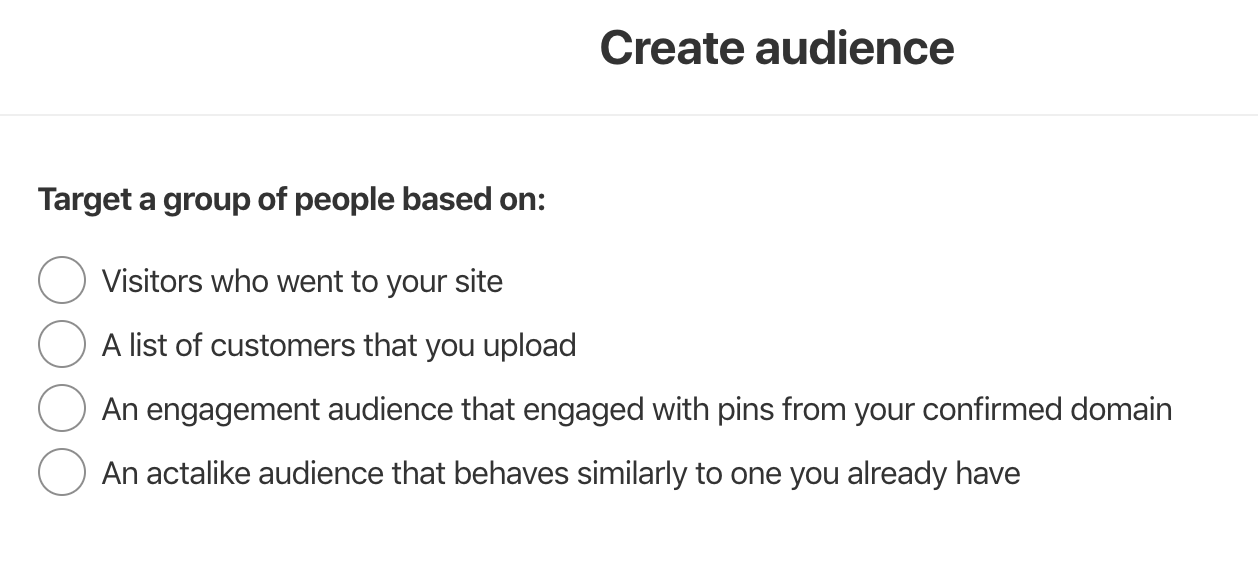
The visitor audience is based on a Pinterest tag, very much like the Facebook pixel. The Pinterest tag is a piece of JavaScript code you can install on your website to gather conversion insights and to build audiences that you can then target, based on actions taken on your site.
The Pinterest engagement audiences are really interesting, too. For these, all you need is to confirm your domain with Pinterest, and then Pinterest will be able to check to see which Pinterest users have engaged with pins that link back to your website. So for instance, if 1,000 people had saved a pin of Buffer blog content, we could build an engagement audience based on this.
Similar to the Facebook and Instagram engagement audiences, Pinterest gives you a handful of options to further customize this group. You can filter based on a specific URL, based on a pin category, or even based on the percentage of video that’s been viewed.
One interesting way that e-commerce brands can use this is to create audiences that are interested in particular product categories — people who click on certain links or certain Pins.
How to Create Custom Audiences for Twitter
With Twitter ads, you can build custom audiences based on
- An uploaded list of contacts or customers
- A collection of website visitors based on data you get from using a Twitter website tag
- A list of your mobile app users
- A flexible audience.
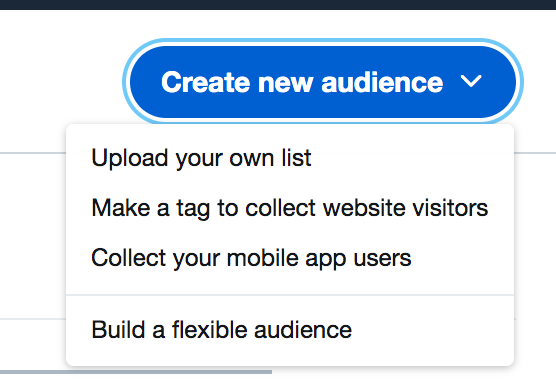
The flexible audiences feature is similar in nature to some of the engagement audiences we’ve talked about before. These audiences give Twitter advertisers a way to save combinations of audiences and subsets of audiences, based on factors like recency and frequency of interactions.
How to Create Custom Audiences for LinkedIn
You can build custom audiences on LinkedIn based on a list of contacts that you upload or you can build audiences based on website data, captured using a LinkedIn tag.
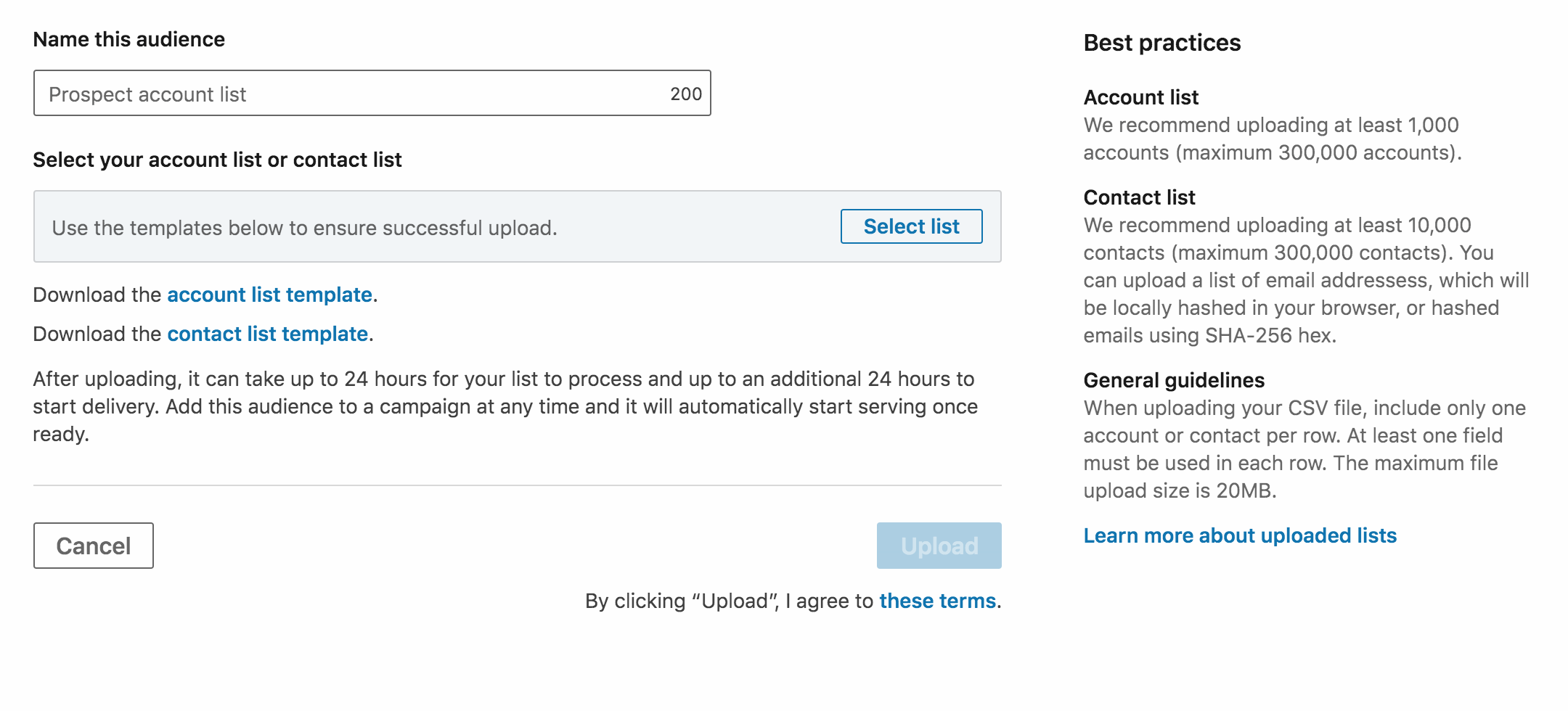
One interesting bit of audience customization that LinkedIn provides is with account-based audiences. Let’s say that you want to get a certain percentage of Fortune 500 companies using your product; well, you can upload this list of accounts to LinkedIn and build a custom audience that focused on the stakeholders of these companies.
Yes, there’s a lot of interesting things you can do on LinkedIn if you’re a business selling to other businesses. Then of course Facebook, Instagram, Pinterest, and Twitter are all great for selling your products and services direct to consumers.
That’s right, and before we go, we’d love to leave you with just a couple more ideas for how you can use these custom audiences in unique ways.
More Tips for Getting the Most out of Your Custom Audiences
I thought this tip from AdEspresso was pretty intriguing.They boost a lot of their content to a wide audience and then create a custom audience based on people who click that content and visit the website. This custom website audience, then, is made up of people who have already shown a lot of intent and might be more primed to start a trial.
Another exciting way to use custom audiences is to think creatively about what you share with a custom audience of existing customers. Typically you might think of ads as a way to acquire more customers. But what if you used this list as a way to keep existing customers engaged? You can build a custom audience based on people who have shopped with you in the past or used your product before, but it’s been awhile since they returned — a “sleepy” audience of sorts.
And finally, there are some neat things you can do with custom audiences of newsletter subscribers. You can segment the list into audiences of engaged subscribers and disengaged subscribers and deliver unique content to each group. For the disengaged group in particular there’s a lot of value in re-engaging: MailChimp ran an analysis of 60 million e-commerce purchases and 40 million email addresses from retailers and found that a single inactive subscriber is still worth 32% of an active subscriber.
About the Science of Social Media
The Science of Social Media is your weekly sandbox for social media stories, insights, experimentation, and inspiration. Every Monday (and sometimes more) we share the most cutting-edge social media marketing strategies from brands and influencers in every industry. If you’re a social media team of one, business owner, marketer, or someone simply interested in social media marketing, you’re sure to find something useful in each episode. It’s our hope that you’ll join our 27,000+ listeners each week and rock your social media channels as a result!
Try Buffer for free
190,000+ creators, small businesses, and marketers use Buffer to grow their audiences every month.



